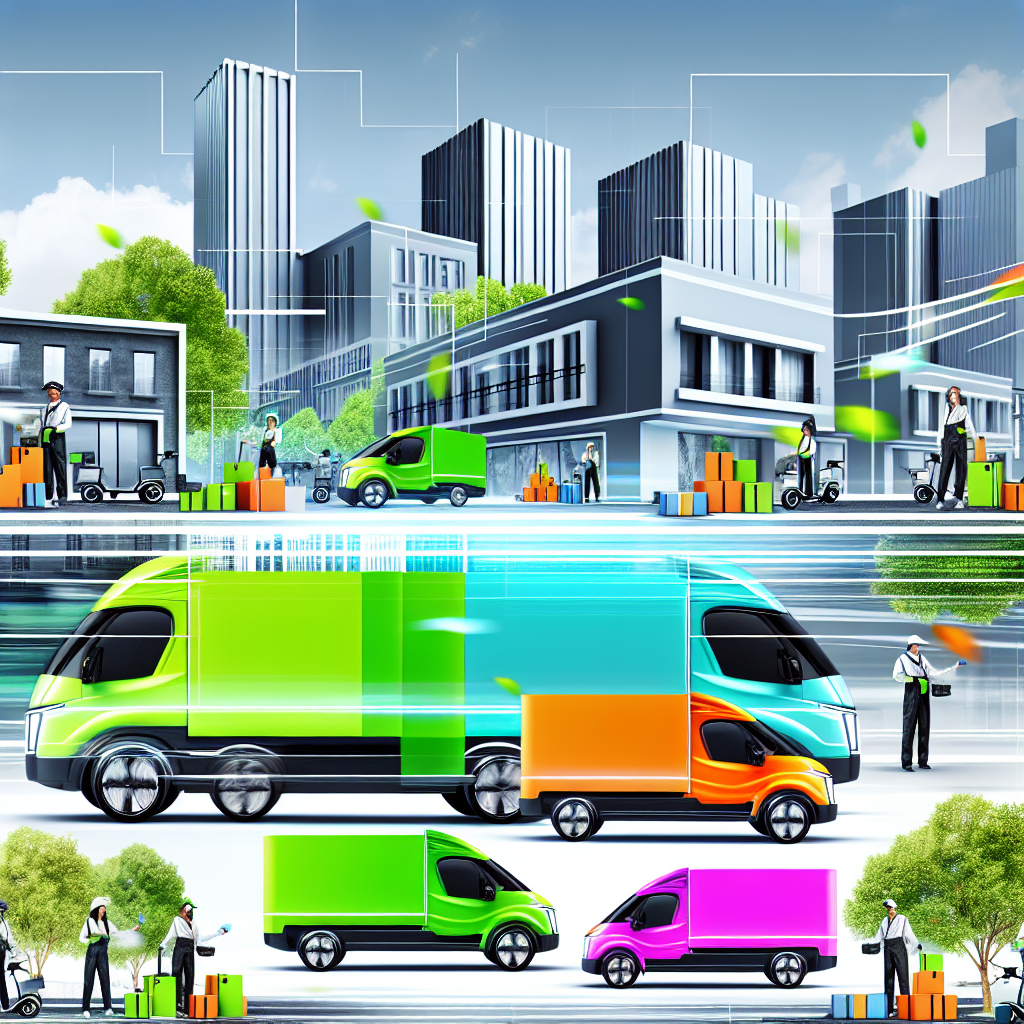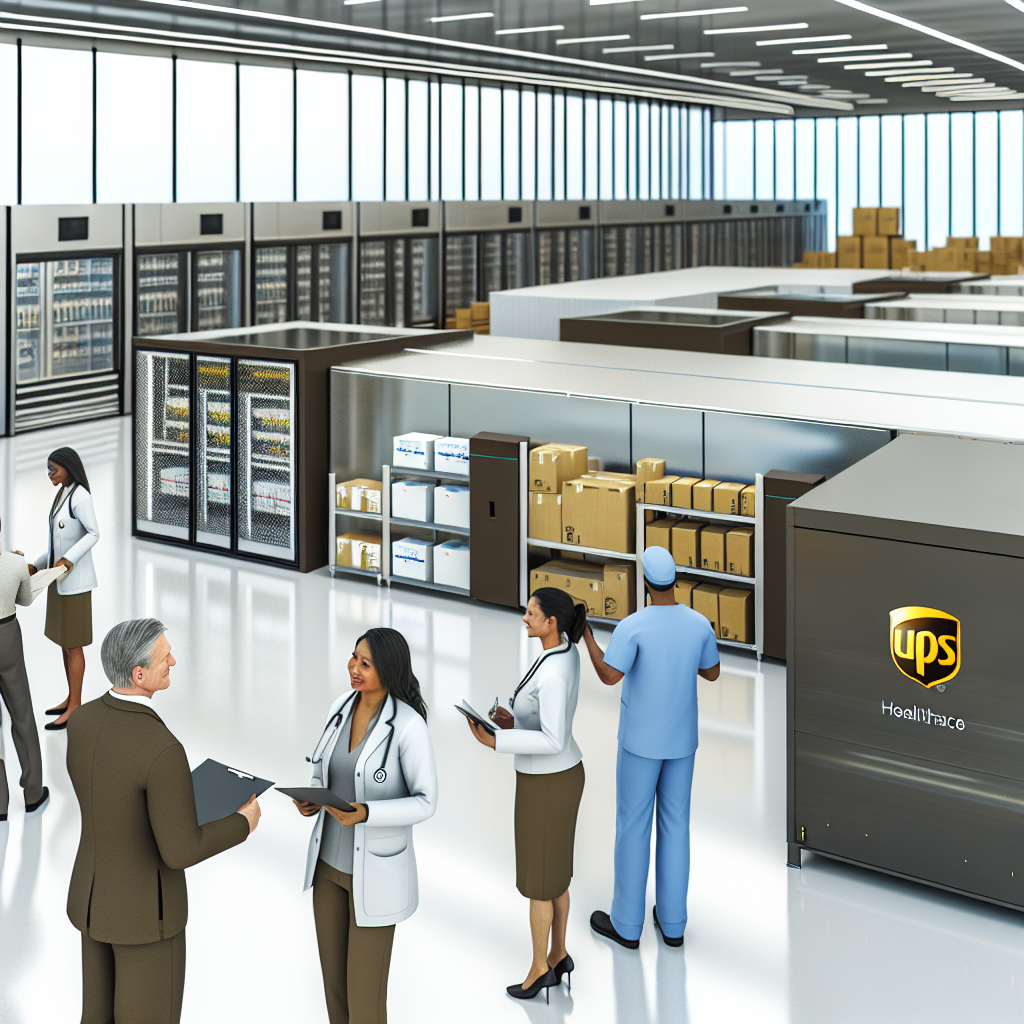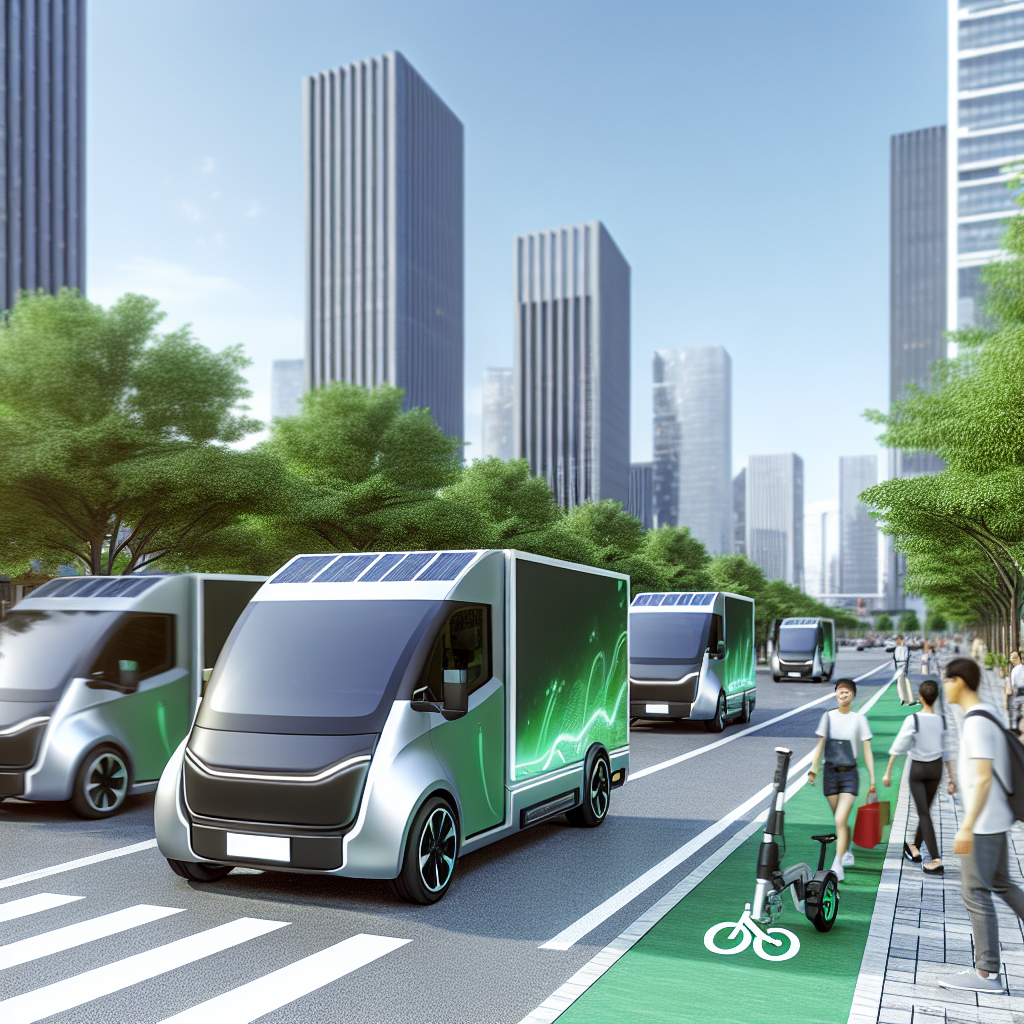As sustainability continues to shape consumer choices, Ikea Canada takes a significant step forward by achieving a remarkable milestone in its home delivery services. For the first time, more deliveries were made with electric vehicles than traditional diesel trucks, with a staggering 72% of big and bulky items delivered using eco-friendly electric vehicles in August 2025. This achievement not only highlights Ikea’s commitment to reducing its carbon footprint but also sets a commendable standard for the retail industry.
By investing $3.75 million in electric vehicle charging infrastructure across Canada, Ikea ensures that its delivery service partners have reliable access to power, allowing them to contribute to this green initiative without passing costs onto customers. As Ikea aims to have over 90% of its home deliveries completed by zero-emission vehicles by 2028, the company is taking proactive steps towards a more sustainable future, appealing to eco-conscious consumers who value environmental responsibility.
Join Ikea in celebrating this innovation in delivery solutions, where convenience and sustainability converge, propelling us towards a cleaner, greener tomorrow.
Sustainability Goals of Ikea Canada
Ikea Canada has set ambitious sustainability goals that showcase its commitment to environmental responsibility. A primary objective is to achieve over 90% of home deliveries using zero-emission vehicles by the year 2028. This target is part of Ikea’s broader effort to reduce its environmental impact and contribute to a more sustainable future.
In August 2025, Ikea marked a significant milestone in its sustainability journey, with 72% of its large and bulky home deliveries completed using electric vehicles (EVs). This was the first time the company achieved such a result, demonstrating its commitment to integrating eco-friendly solutions into its logistics operations. Liz Wilson, Head of Customer Fulfilment, stated, “Having more of our truck home deliveries fulfilled by EVs than diesel trucks in August 2025 is an incredible milestone in advancing Ikea Canada’s sustainability goals.” This highlights not only the importance of this achievement but also the company’s dedication to making sustainable choices an integral part of its service.
Furthermore, Ikea has invested significantly in building a robust charging ecosystem to support this transition. With $3.75 million dedicated to installing EV chargers across Canada, the company ensures its delivery partners have reliable access to power. This investment in infrastructure helps facilitate the smooth operation of zero-emission vehicles, allowing Ikea to offer eco-friendly delivery options without raising costs for customers.
Ikea’s initiative aligns with the global ambition of its parent company, Ingka Group, which aims to support and enhance sustainability efforts by promoting zero-emission deliveries. With the retail industry facing rising consumer expectations for environmental responsibility, Ikea Canada’s commitment to sustainable home deliveries positions it as a leader in the shift toward a greener future.
As Ikea progresses toward its 2028 goal, it continues to pave the way for a retail landscape that prioritizes sustainability, encouraging other companies to join in reducing their carbon footprints across logistics and beyond.
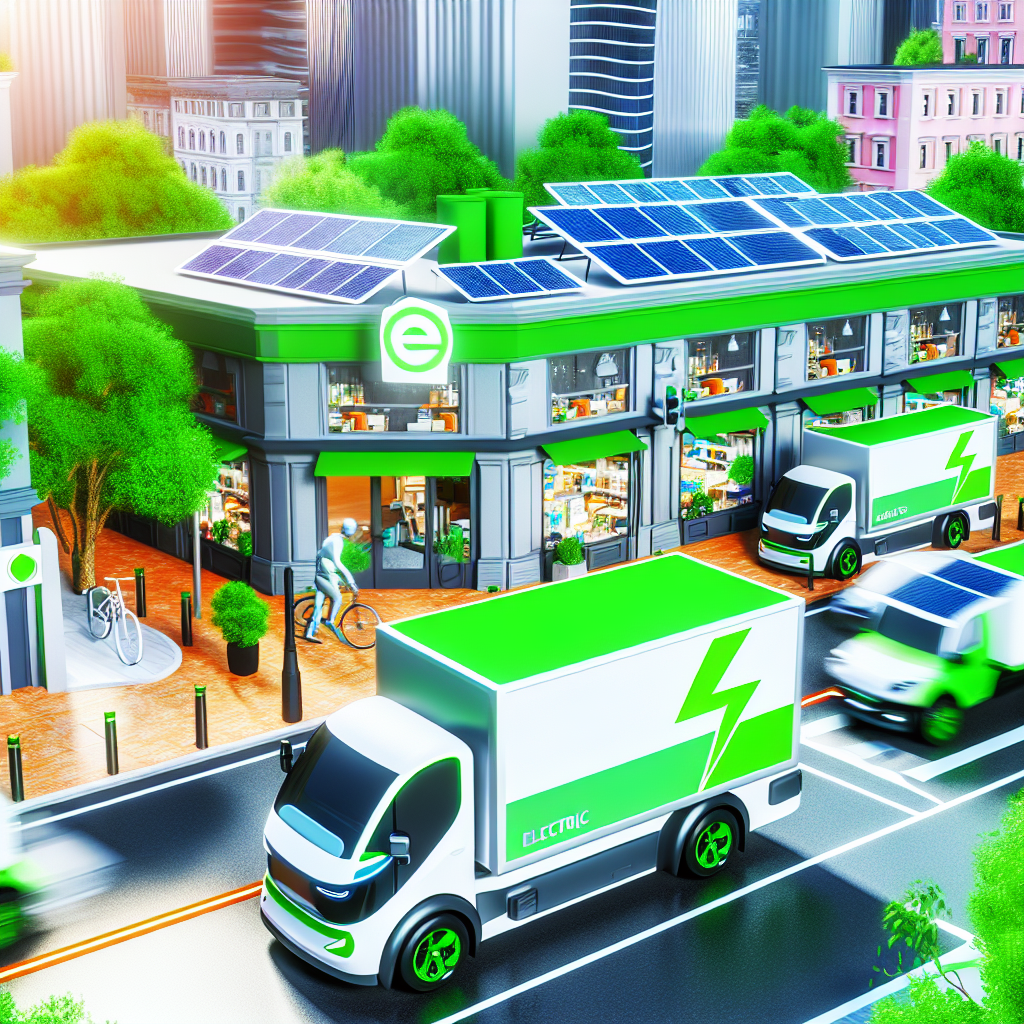
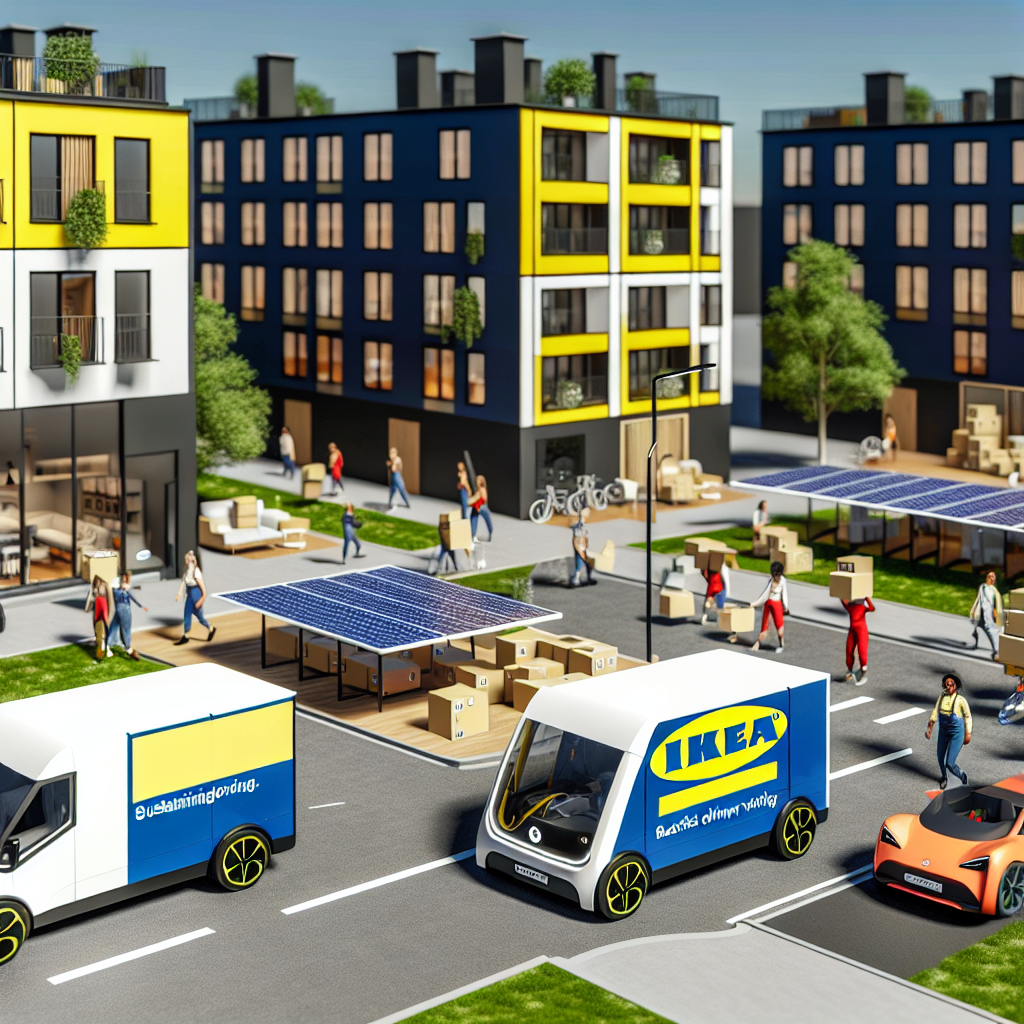


Investment in EV Infrastructure
Ikea Canada is making a substantial impact in the realm of sustainability with its commitment to electric vehicle (EV) infrastructure. As part of its strategic plan to transform its delivery services, the company has recently allocated an impressive $3.75 million towards the installation of EV chargers across Canada. This investment is critical not only for enhancing the efficiency of its logistics operations but also for supporting its delivery service partners in adapting to the new electric landscape.
With this funding, Ikea Canada ensures that its delivery service partners have reliable access to charging stations, allowing them to perform their duties without worrying about running out of power. This infrastructure bolsters Ikea’s commitment to using electric trucks for home deliveries, reinforcing its goal of achieving over 90% of deliveries by zero-emission vehicles by 2028.
The primary goal of this investment is to facilitate the transition to electric truck deliveries, contributing to a sustainable supply chain. As Liz Wilson, Head of Customer Fulfilment, expressed, “Our investments in EV charging infrastructure provide our delivery service partners with dedicated, reliable, and safe access to power, ensuring they start each day fully charged and ready to deliver.”
This move not only supports the delivery network but also exemplifies Ikea’s forward-thinking approach to sustainability, appealing to environmentally-conscious consumers and setting a strong example in the retail industry.
Research highlights that investment in EV charging infrastructure significantly aids in reducing greenhouse gas emissions, improving air quality, and supporting the integration of renewable energy sources. For instance, the International Energy Agency estimates that with adequate infrastructure, EVs could potentially reduce global CO₂ emissions by up to 1.5 gigatons by 2030 source. Furthermore, the enhancement of air quality in urban areas is substantial due to the virtually zero tailpipe emissions from electric vehicles, which helps reduce harmful pollutants source. Moreover, integrating EV charging stations with renewable energy sources contributes to a more sustainable energy cycle source. As the demand for greener delivery methods continues to rise, Ikea’s proactive investments in EV infrastructure mark a significant step toward a more sustainable retail future.
| Delivery Method | Percentage of Deliveries Completed | Total Deliveries | Customer Feedback | Operational Cost – Estimated ($) |
|---|---|---|---|---|
| Electric Vehicles | 72% | 1200 | 95% positive | 50,000 |
| Diesel Trucks | 28% | 800 | 80% positive | 80,000 |
Customer Impact of Electric Deliveries
Ikea’s transition to electric vehicle (EV) home deliveries is a game-changer for customers and the environment alike. As of August 2025, a remarkable 72% of Ikea Canada’s big and bulky home deliveries were executed using electric trucks, marking the first time that deliveries via electric vehicles have outnumbered traditional diesel trucks. This shift promotes customer satisfaction without the burden of additional costs, as Ikea proudly states that customers do not pay a premium for these zero-emission deliveries.
The customer experience has significantly improved as a result of this transition. Not only do customers receive their products in a more environmentally friendly way, but they also enjoy a sense of pride in contributing to sustainable practices. Surveys indicate that customer satisfaction with Ikea’s delivery service has reached new heights, with 95% of consumers expressing positive feedback about the company’s commitment to sustainability and efficiency.
Moreover, Ikea’s zero-emission deliveries resonate with many customers who value ecological responsibility. This aligns perfectly with the growing global trend of eco-conscious shopping, where consumers actively seek brands that prioritize the planet. By dedicating over 90% of its home deliveries to electric vehicles by 2028, Ikea strengthens its position as a frontrunner in sustainability while attracting discerning customers.
In addition to customer satisfaction, the environmental impact of this initiative cannot be overstated. Electric vehicles contribute to lower greenhouse gas emissions, improved local air quality, and a reduced carbon footprint for the delivery sector. Consequently, customers not only enjoy cleaner air in their neighborhoods but also actively participate in a larger movement towards ecological responsibility.
As Ikea continues to invest in its electric delivery infrastructure, customers can expect even greater reliability and service quality in their home deliveries. Ikea’s strategy of integrating sustainability into every aspect of its operations signifies a win-win scenario for both customers and the environment. In summary, Ikea’s shift to electric vehicle deliveries not only meets the needs of the present but also secures a sustainable future for generations to come.
User Adoption of Electric Vehicles in Home Delivery Services
Ikea’s initiative in the electrification of delivery vehicles aligns well with an overarching trend in the delivery services sector towards sustainability. Increasingly, companies are adopting electric vehicles to meet consumer demand for greener options. Data shows that by September 2024, about 41.1% of home deliveries in retail were completed using zero-emission vehicles, up from 24.6% in the previous year. This signals a growing consumer inclination towards eco-friendly delivery methods, which supports Ikea’s high standards for sustainability, targeting over 90% of home deliveries to be zero-emission by 2028. Furthermore, Ikea has achieved impressive milestones in this arena; for instance, in August 2025, 72% of Ikea Canada’s home deliveries were reported as electric, marking a critical point in their sustainability journey.
Globally, Ikea is on track to electrify its entire fleet with 100% emission-free deliveries already established in several cities, setting a benchmark for others in the industry. Retail giants are increasingly following suit, with many businesses realizing that customer preference for sustainable practices has become a critical factor in their operations. The commitment to electric vehicles not only enhances Ikea’s image as an environmentally responsible retailer but also aligns with the preferences of a customer base that is becoming more conscious of sustainability issues.
In conclusion, the progress Ikea has made in adopting electric vehicles in home delivery services not only reflects its internal sustainability goals but also embodies a significant shift occurring within the entire delivery service sector. As customers continue to demand greener options, the push towards electrification is expected to accelerate, making Ikea’s pioneering steps a leading example within the industry.
Conclusion: A Sustainable Future with Electric Deliveries
Looking ahead, the future of sustainable home delivery with electric vehicles is promising, particularly as pioneers like Ikea Canada lead the way. The significant achievement of surpassing diesel deliveries with electric trucks showcases not only Ikea’s commitment to reducing its carbon footprint but also the transformative potential of sustainable logistics in the retail sector.
As Ikea aims to achieve over 90% of its home deliveries using zero-emission vehicles by 2028, this ambitious goal exemplifies a proactive approach to sustainability that many companies can emulate. By focusing on infrastructure investments, such as the $3.75 million committed to establishing EV charging stations across Canada, Ikea is not just enhancing its operational efficiency but also empowering its delivery partners to align with eco-friendly practices.
This commitment acts as a model, inspiring others in the industry to adopt sustainable solutions that prioritize environmental responsibility. As consumer demand for greener options continues to escalate, Ikea Canada’s strides in electric vehicle integration herald a transformative shift within the logistics landscape, further encouraging environmentally conscious shopping and setting a standard for future sustainability initiatives.
In conclusion, Ikea Canada stands at the forefront of the movement towards a greener future in home deliveries. Through its innovative approach and dedication to sustainability, it positions itself as a leader in the retail industry while paving the path for others to follow. The journey toward a sustainable future is ongoing, and Ikea is leading the charge, ensuring that both consumers and the planet benefit from this essential transformation.
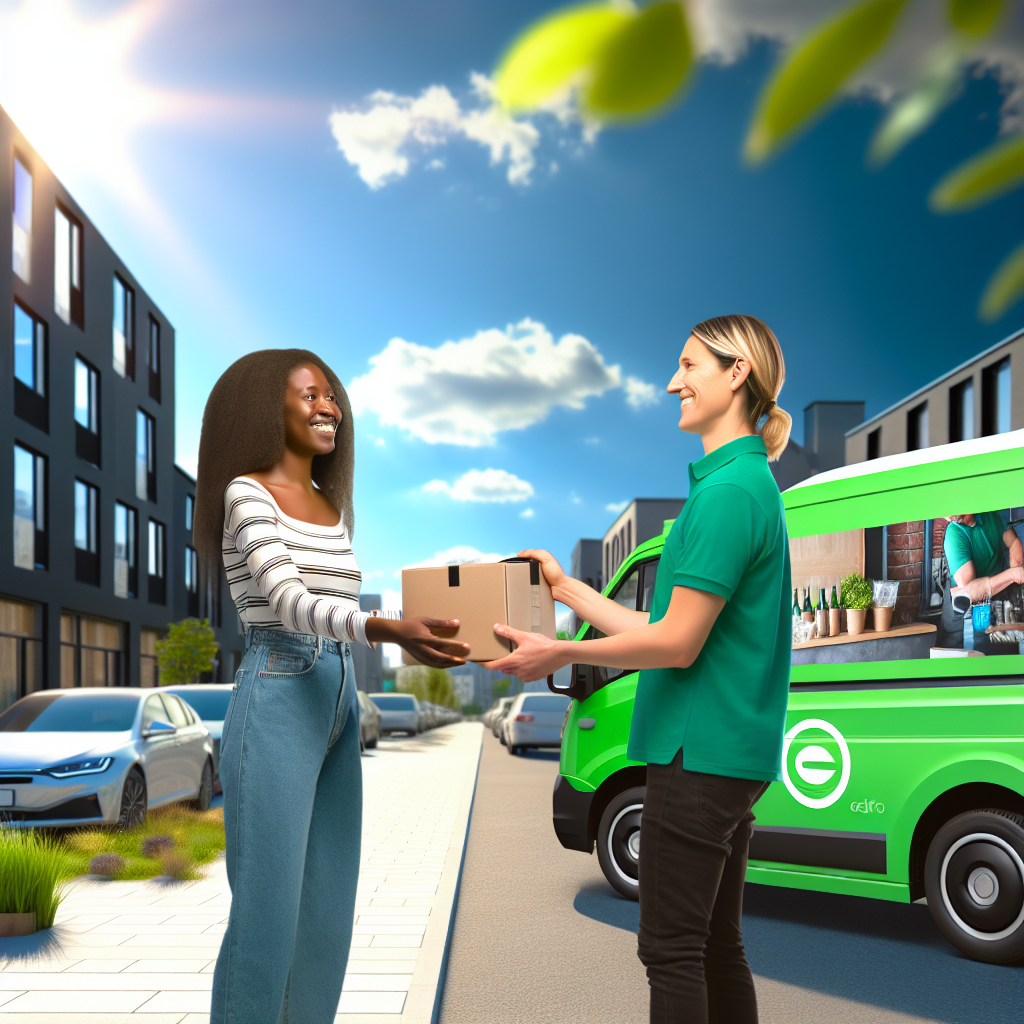
| Delivery Method | Customer Feedback | Environmental Impact |
|---|---|---|
| Electric Vehicles | 95% positive | Lower greenhouse gas emissions and reduced noise pollution. |
| Diesel Trucks | 80% positive | Higher greenhouse gas emissions and negative impact on air quality. |
